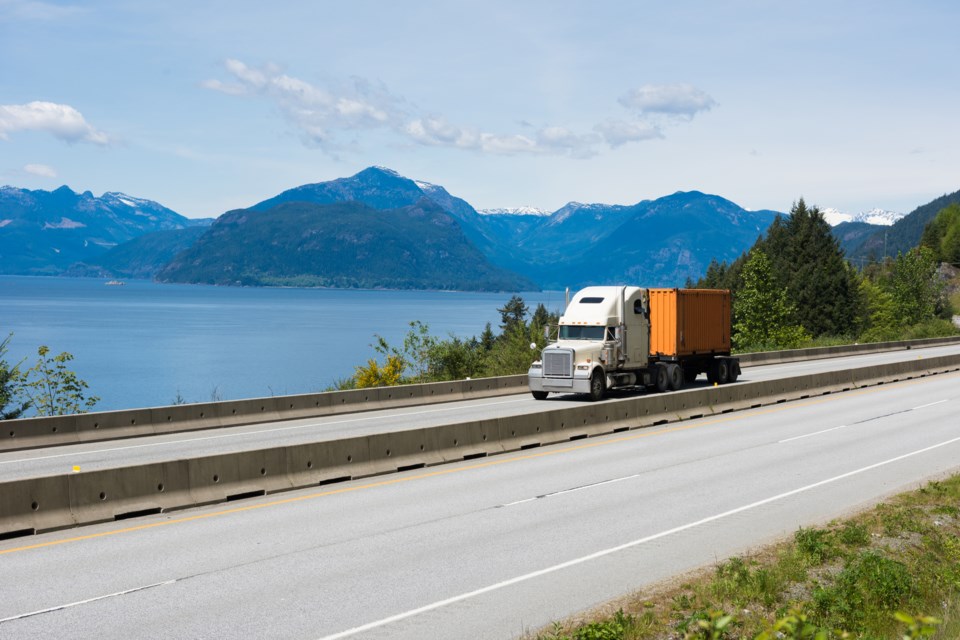Headlines scream about supply chain issues holding up everything from cars to wine to crutches, but why is it happening and what, if anything, can Squamish consumers do about it?
associate professor of international business at the University of Victoria, says that COVID-19 has exposed the fragility of conventional global supply chains.
"If you think about any product or service, it requires a supply chain," he said. " A supply chain is all of the different actors and entities that come together in order to deliver that product or service.... We can take a pencil, or we can take a piece of art and you will find there are many, many actors involved in the delivery of that product."
Truckers that deliver the goods to stores in Squamish are one piece of a network, for example.
Each player does a job that passes on the product to the next step.
"That system was hidden. It was kind of backstage. No one really was paying attention to it. When you go to the store, you expect it to be there all the time and you don't really think about how it came to be there," Guitouni of the supply chain pre-pandemic.
What does a pandemic have to do with it?
With the pandemic, people are consuming differently, Guitouni notes.
"COVID-19 has created new patterns of consumption. We had more money available, we had more innovation, we are buying more online and so there is a demand that has been created. At the same time, the centres where these things are produced, they have also been impacted by COVID-19," he said.
For example, some factories had to shut down due to pandemic restrictions or illnesses.
"In between the chain, which is all these transportation systems, they are now feeling the pressure. The demand pressure and the supply pressure."
While the problem is global, it is less acute for products coming to Squamish from places in North America and more acute with products coming to us from China.
How did we get here?
Supply chain issues are surfacing after 30 or 40 years of companies investing in globalization.
"Many companies pushed their production to cheaper places, where it is cheap to produce and we counted on the reduction of the cost of transportation and communication to be able to get stuff from Asia, Africa, from Latin America.”
Thus, what was previously, in many cases, a very local or national supply chain morphed into global networks.
"The problem is, everybody is justifying that by a cost reduction, so everyone in this chain also tried to reduce their cost — no slack, no redundancy, nothing is there in most cases, to be able to deal with any kind of surge in demand or with disruptions."
Because products now have to travel thousands of miles to get to us and because there is no slack, the pandemic strain caused the breakdowns in the system that led to the shortages that we have now, Guitouni added.
There is no one over-seer of this system, but instead, each cog in the wheel is responsible for its own part and the people — business owners, for example — are only thinking about their own situation, not the whole, Guitouni said.
"They need to collaborate and co-ordinate," he said. "That does not happen when you are just making decisions that are based on transaction costs — how much is that going to cost me right now. How much it is going to cost in the long run — people don't pay attention to that."
Globalization costs more than shortages
The climate pays the price for the large footprint of the movement of goods, too, Guitouni noted.
"When your production is moving thousands of miles, the footprint of that becomes so [impactful] on the environment."
There is a human cost too.
The reduction of costs has led to "many bad practices," around the world, Guitouni said, such as poor wages and working conditions, and in extreme cases, slavery, the exploitation of children and so on.
What can we do now?
Guitouni said individuals, businesses and communities have roles to play in the solution to the current supply chain clog.
As consumers, individuals can help by buying local and encouraging local businesses to do the same.
"Instead of trying to buy the cheapest thing that is going to come from overseas," he said.
"We can reduce the pressure on the system by reducing the demand on items that are being imported."
Consumers can pay more attention to the footprint of the items they are buying, he added.
For business owners, Guitouni says they need to think about the value chain instead of a "race to the bottom" to find the cheapest supply of something bought at the cheapest price.
"They [also] have to think about diversification in their supply base. They shouldn't put all of their eggs in one basket," he said.
For communities, this crisis is a wake-up call to say that supply chains are part of our national security and well-being and what makes us a society.
"We need to start rebuilding supply chains that are more responsible, more sustainable, that have resiliency," he said.
How have supply chain issues impacted your shopping, business or job? Let us know at [email protected].
**Please note, since the story was first posted, we swapped out the main photo. A reader noticed the image was flipped (not by us), and we don't allow that. Thus, we uploaded a new photo.




